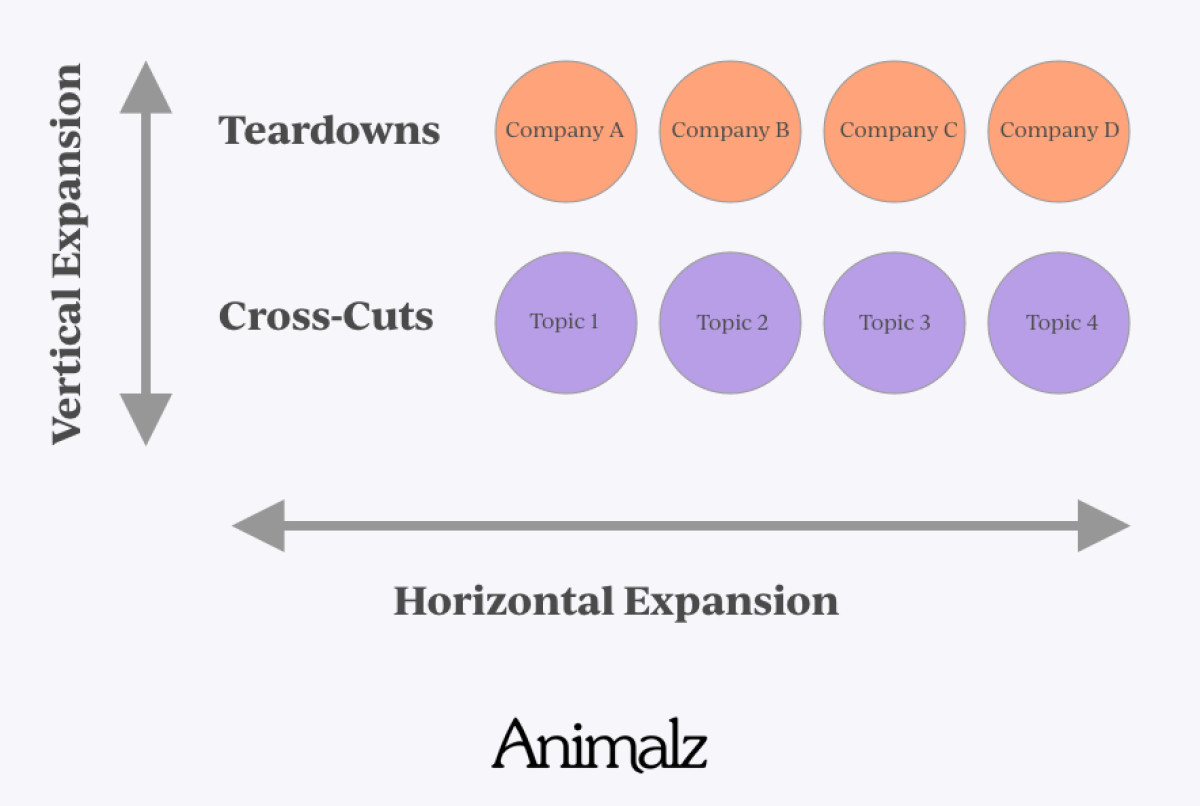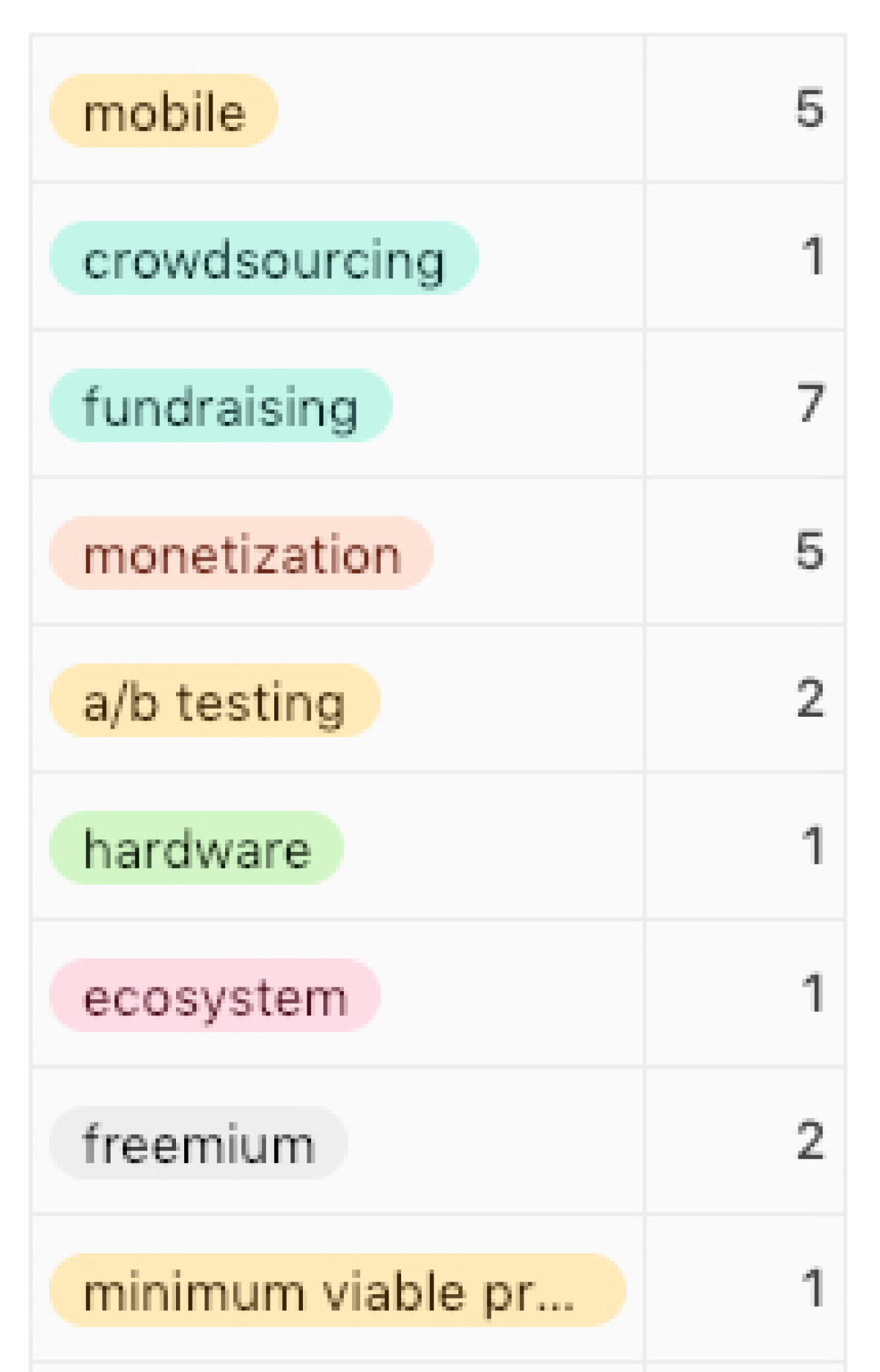Teardowns, list posts, case studies, experiments—some of the best blog content originates from handy, well-worn templates.
Templated content can be one of the easiest and fastest ways to grow traffic to a blog. Paired with cross-cutting—a technique to expand on patterns you find—you can build a comprehensive and interesting blog in a few months.
Before you pooh-pooh the idea of “templated” content, consider that many successful content operations lean on repeatable archetypes. Podcasts and newsletters rely far more heavily on format than most blogs—a trend us content marketers can learn from. A template is the format that helps you turn a concept into an ongoing series of great content.
The examples we’ll talk through today are mostly teardowns. A teardown is a templated style of content that analyzes an existing business, marketing campaign, industry, workflow, etc. It is a versatile tool that every content marketer can lean on for useful, quick content.
How to Use Templated Content
UserOnboard is a classic example of excellent templated content in the SaaS space. UserOnboard founder Samuel Hulick has built a widely read and beloved UX blog almost entirely through the use of his templated teardowns—analyses of the user onboarding flows of different web and mobile products.
Each post on the blog consists of a series of screenshot-heavy slides—usually at least 60, but often significantly more than that—visually breaking down the process of landing on, signing up for, and using a new company’s product. With the extensible nature of this format, Hulick can plug an infinite number of companies into the formula and get great results every time:
The simple concept is easy for readers to understand, but keeps them reading because each “teardown” produces different results. It’s repeatable, it’s interesting and it scales well.
Here are a few other examples of content outlets that rely on repeatable templates:
Company Template Example Product Habits How [Company] Grew from 0 to [Huge Number] How Square Became a $30 Billion Company by Reimagining Payments Jilt How [Trending Company] Used [Strategy] to Accomplish [Result] Warby Parker built a 1,400-employee company by focusing on team culture Price Intelligently Pricing Teardown: [Company A] vs. [Company B] Tearing Down the Pricing of Headspace and Calm First Round [Successful Company]’s [Subject Matter Expert] Explains How They [Achieved Massive Success] Trello’s Product Lead on the Unique Ramp to a 10-Person Product Org
There are a few important reasons why teardowns in particular help you grow traffic:
Templates make the format familiar to readers. Each piece has just the right amount of predictability and surprise, which keeps people coming back.
You can leverage other brand names for search and social traction, i.e., “How Airbnb …”
Doing one analysis after another means your content team learns the subject matter quickly.
As you can see from the examples above, most B2B SaaS companies follow a similar template. All feature brand names in the title and explain how [x] did [y] using [z]. There are plenty of other ways to approach templated content:
The Best [X] for [Y]: Wirecutter and our own site Keysheet use this to great effect. They review products by use case, i.e., The Best Cryptocurrency for Gambling. You can review or curate all kinds of things for different personas.
Letter to My Younger Self: The Players’ Tribune publishes an ongoing series of contributed articles from professional athletes. The format doesn’t vary much, but the stories are vastly different and always interesting. (This would be hard to emulate in the B2B space, but that doesn’t mean you can’t use your creativity to find a similar format that would thrive.)
How I PM: This interview series by Amplitude asks the same series of questions to product managers from various companies. Questions like “What’s the best thing you’ve read to learn how to be better at your job?” can be used over and over again with new and interesting results every time.
When you use templates, you create a content series that dives deep into specific topics, people, or companies. Creating more teardowns is an example of horizontal expansion, i.e., you create more of the same thing.

This is valuable, but doesn’t comprise a content strategy on its own. As you create teardowns, you will begin to see patterns. This your opportunity to expand. There will be topics, themes, ideas, people, etc., that come up often. In Price Intelligently’s series of pricing teardowns, for example, freemium pricing comes up often. In Hiten Shah’s Product Habits posts, a pattern of early-stage pivots could emerge. These patterns create opportunities for a content strategy known as cross-cutting.
How to Use Cross-Cutting
Cross-cutting is the process of creating content that aggregates threads or narratives from the content you already have on your site.
Cross-cutting is an example of vertical expansion, i.e., you create a new layer of content that cuts across your existing content. This strategy dictates that when topics come up often, they are given their own posts. Using Price Intelligently as an example:
If freemium pricing comes up in five pricing teardowns …
… Create a post on freemium pricing: “How 5 Companies Used Freemium Pricing to Their Advantage”
Cross-cutting is good content marketing hygiene. When topics come up over and over again, they deserve their own pages. There are benefits for SEO and readers. These topical pages help readers dive deeper on subjects they are interested in, and result in pages that can rank for those topics.
Here’s how this works in practice. Identify all of the posts on your site that follow a similar template, then look for recurring themes. If a topic that seems relevant comes up even once, tag it. We recommend using Airtable to collect the posts and tag them. (Here’s a template you can use.)
Once you’ve added and tagged all the posts, you can use a simple pivot table to count the number of times each topic comes up. From here, put your content marketing hat on. Figure out why “mobile” and “fundraising” keep coming up, then write a post that informs an interested reader on the topics.

A good cross-cut includes general information about the topic, but also links to the teardowns where that topic is mentioned. Here is an example from Appcues. They have mentioned “new feature posts”—i.e., blog posts to announce new product features—in more than 20 posts. That means the topic deserves its own posts, so Appcues created 3 Types of New Feature Posts and When to Use Which. It links out to other posts mentioning the topic and those posts can link back to it.
Move Horizontally and Vertically
A good content strategy addresses a few core topics from all angles. This is one of the tenets of our library vs. publication framework. It’s better to go as deep as possible on a few topics than it is to go light on a wide range of topics.Templates and cross-cutting are just two tools. You can also approach topics by funnel depth, work from the bottom up or create a growth cycle—but whichever mix of these tactics you employ, make sure you’re giving each and every topic the attention it deserves.
